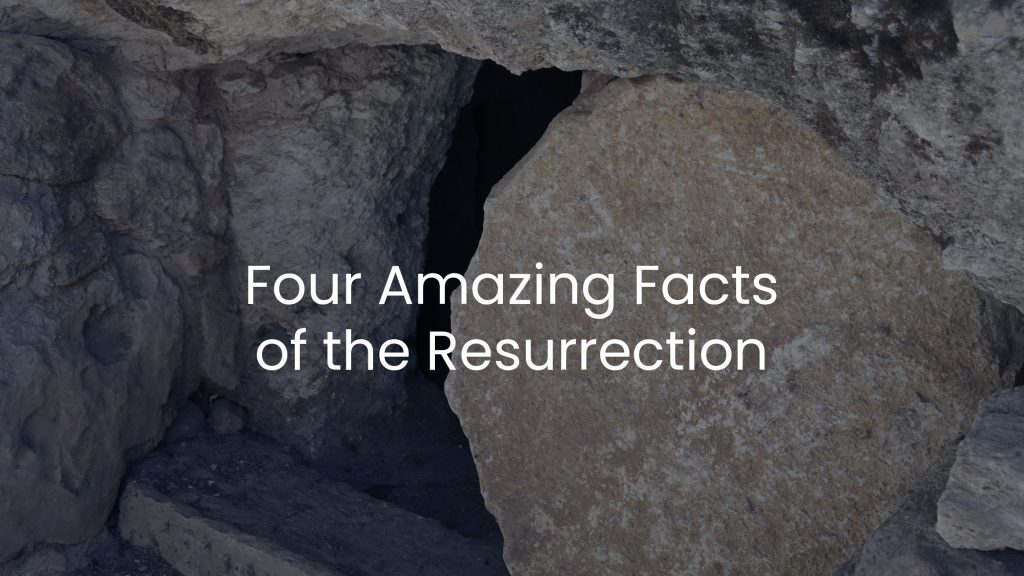|
Getting your Trinity Audio player ready...
|
For I delivered to you as of first importance what I also received: that Christ died for our sins in accordance with the Scriptures, that he was buried, that he was raised on the third day in accordance with the Scriptures, and that he appeared to Cephas, then to the twelve. Then he appeared to more than five hundred brothers at one time, most of whom are still alive (1 Corinthians 15:3-6, ESV).
Let’s consider four statements of history stated or implied in 1 Corinthians 15:3-6. . .
First: Jesus was buried in a tomb
Second: The tomb was found empty
Third: Witnesses experienced appearances of Jesus alive from the dead
Fourth: The original disciples believed in a resurrection despite forsaking Him earlier
A question: If we believed these four facts, wouldn’t it be logical to believe in the Biblical account of the resurrection of Jesus Christ? Here’s the weird part: Many scholars, in fact almost all serious scholars, liberal or conservative, believe the four statements to be historically accurate.
And yet, many of these scholars and historians don’t believe in an actual, literal, and physical resurrection of Jesus.
William Lane Craig (one of my heroes in the apologetics world) writes about the four statements. . .
Christianity, as a religion rooted in history, makes claims that can in important measure be investigated historically … We may be surprised to learn that the majority of New Testament critics investigating the gospels in this way accept the central facts undergirding the resurrection of Jesus. I want to emphasize that I am not talking about evangelical or conservative scholars only, but about the broad spectrum of New Testament critics who teach at secular universities and non-evangelical seminaries. Amazing as it may seem, most of them have come to regard as historical the four basic facts which support the resurrection of Jesus.
Amazing. Let’s all bow down and worship the living Jesus. Oops, hold on, as evidence doesn’t necessarily imply belief.
My hero, William Lane Craig, debated a professor at the University of California; though a critic of the resurrection, this professor also admitted the validity of the four historical facts. Craig writes. . .
He could not deny the facts of Jesus’ honorable burial, empty tomb, post-mortem appearances, and the origin of the disciples’ belief in the resurrection. So his only recourse was to come up with some alternate explanation of those facts. And so he argued that Jesus of Nazareth had an unknown, identical twin brother, who was separated from him as an infant and grew up independently, but who came back to Jerusalem at the time of the crucifixion, stole Jesus’ body out of the tomb, and presented himself to the disciples, who mistakenly inferred that Jesus was risen from the dead!
You really can’t make this stuff up! As William Lane Craig continues. . .
Now I won’t bother to go into how I went about refuting this theory. But I think the example is illustrative of the desperate lengths to which skepticism must go in order to refute the evidence for the resurrection of Jesus.
I think it’s better and historically accurate to wake up on Easter morning and read 1 Corinthians 15:3-6 with confidence …
For I delivered to you as of first importance what I also received: that Christ died for our sins in accordance with the Scriptures, that he was buried, that he was raised on the third day in accordance with the Scriptures, and that he appeared to Cephas, then to the twelve. Then he appeared to more than five hundred brothers at one time, most of whom are still alive.
Amen!

